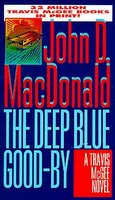
Much of account centers on T.D. Allman's Miami: City of the Future and Joan Didion's Miami, the two books his editor gave him for orientation when he arrived in the city to take up his job as a reporter.
But I was more taken with his brief survey of the crime fiction spawned in the region:
Miami has become a renowned breeding ground for crime writers, ranging from the zany (Carl Hiaasen) to the pulpy (Edna Buchanan) to the more literary (Les Standiford). The granddaddy of the genre is the late Charles Willeford, whose marvelous Miami Blues, published in 1984, introduced the world to Hoke Moseley, a foul-tempered, toothless detective whose drive to capture bad guys barely outstrips his existential burdens. One of many reasons to savor Miami Blues is its villain, a pitch-perfect psychotic by the name of Freddy J. Frenger Junior. (Those who remember Alec Baldwin's film version of Frenger saw only a pale version of his pathologies. Trust me.)All
 man also gives props to:
man also gives props to:the other giant of South Florida crime fiction, John D. MacDonald, and in particular the 1964 novel The Deep Blue Good-by, which features his most beloved protagonist, a salvage expert and self-described "knight in tarnished armor" named Travis McGee. MacDonald, who counts among his legion of fans Stephen King, was named a Grand Master by the Mystery Writers of America in 1972, and won the American Book Award eight years later.Here's the link to Allman's brief but worthwhile article.
Click here to read the case N.M. Kelby, author of Whale Season, makes for "The Great Florida Novel."
Click here to read one diplomat's account of the books that colored his sense of places he has known and would like to know.
--Marshal Zeringue





